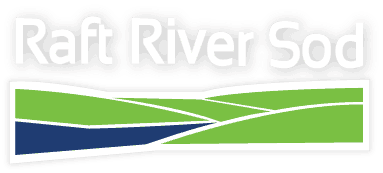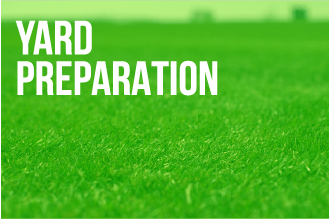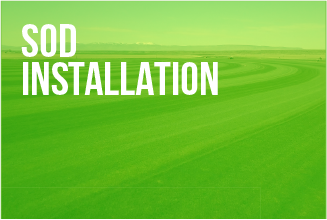LAWN MAINTENANCE
TIPS FOR FERTILIZER, WATER, WEED CONTROL, AND PESTS
Now that you've prepared your yard and installed your sod, you're ready to maintain your new grass! This step-by-step guide is designed to help our customers take care of their lawns with confidence. The most important elements in each section are in bold. Every lawn is unique, but these guidelines fit most conditions. You may need to make small modifications to fit your specific situation. This guide assumes that your lawn is already established. If not, see our Yard Preparations or Sod Installation guides.
This Guide Covers
A healthy beautiful lawn is a result of balance; the right fertilizer, proper timing and amounts, the correct water management, the best-mowing height for the season, and the correct early season preparation, weed, and pest control. Just because a company claims to specialize in lawn and yard care, does not mean they will do the right things to your yard. Some companies often do what is easiest or make their decisions based only on profits, not necessarily the best thing for your lawn. No one will care about the long-term health and beauty of your lawn more than you.
Tools of the Trade
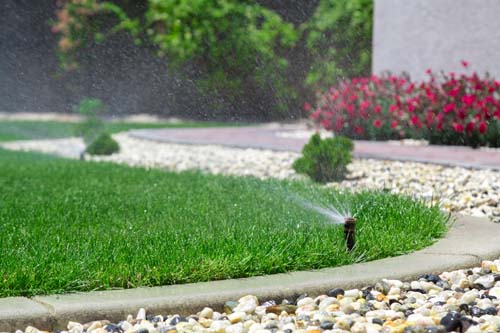
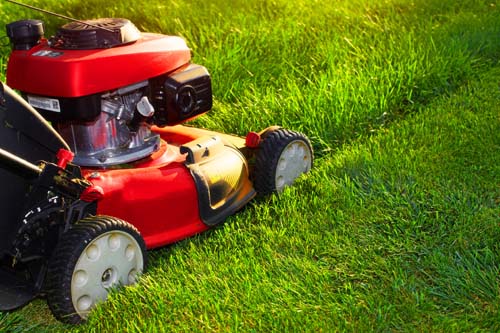
Aeration
To determine if your lawn should be aerated, walk across your lawn. If it has many small bumps caused by earthworms, you probably won’t need to aerate.
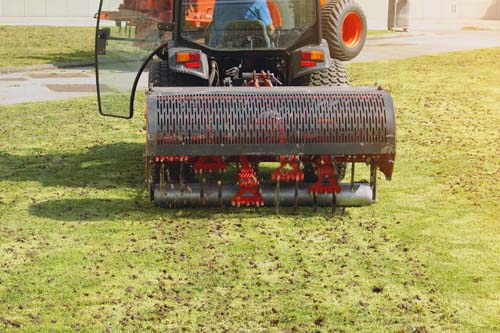
The worms are providing “natural aeration”. In this case, you may consider renting a ride-on roller, to roll your lawn smoothly, (the hand-type rollers are not heavy enough). We recommend watering before raking.
If you do not feel the earthworm bumps, push a 6” screwdriver into several places. If the screwdriver enters easily and goes all the way with little pressure, you don’t need aeration. However, if the screwdriver requires a fair amount of pressure, then you should aerate. The more pressure required, the more aggressive your aeration needs to be.
Most lawns can be aerated in the early Spring as soon as the frost goes out of the soil. A spike-type aerator is sufficient. If you use a plug aerator, plugs should be cleaned off the lawn.
De-Thatching
The purpose of de-thatching is to remove excess thatch in the Spring.
To determine if your lawn needs de-thatching, spread your fingers and run them through the thickest grass in your lawn. If your hand is full of thatch, you should de-thatch. Loose thatch should be cleaned out of the lawn. One de-thatch in the Spring is usually sufficient.
Watering
The purpose of an irrigation system is to help maintain a beautiful healthy lawn with the least amount of cost and water.
We accomplish this by training your lawn through infrequent irrigations. When you allow your lawn to dry out between water cycles, you promote deep roots, plant and soil health, and lower total water use. The longer time period between irrigation cycles, the healthier your lawn will be.
The idea of infrequent irrigation cycles is to put on as much water as your soil will hold, and then wait until your lawn needs water again.
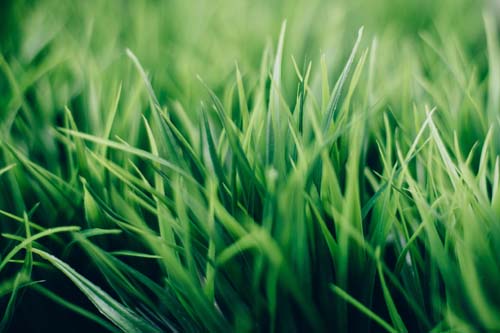
The grass, at the soil level, needs to dry out between each irrigation cycle. If it does not, mold, fungus, disease, and insects can thrive in continually moist conditions. Never water every day. It is not difficult to move irrigation cycles from what you’ve done in the past, to where they should be now.
If you have irrigated every day in the past, change to every other day. If your lawn is used to every other day, try every third day. Add as many days between irrigation cycles as you can, but do it gradually. Most find they can eventually irrigate every 3rd or 4th day.
To determine whether it is time to irrigate again, use a 6” screwdriver. Push it all the way in. If it comes out muddy do not irrigate. If it comes out moist and not muddy, wait a day and probe again. When the screwdriver is mostly dry, it is time to irrigate. Repeat this process each time you think you should irrigate. After a few irrigation cycles, you will notice a pattern emerge that will help you determine the frequency of irrigation needed.
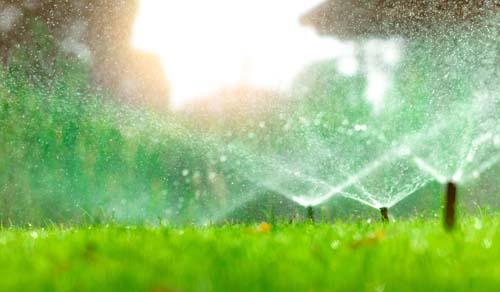
Your lawn will require between ¼” to 1” of water per week during the growing season, depending on temperature and weather patterns. Include rainfall in your calculations to determine how much water is needed each time you irrigate.
Mowing
Mowing is an essential part of keeping your lawn healthy and beautiful.
Some important concepts to remember:
Never mow more than one inch of length at one time.
The frequency of mowing is determined by the amount of time it takes to grow 1” – this will vary throughout the growing season.
Always keep the mower blades sharp, so the mower slices the grass, rather than shattering it. Shattered grass ends turn brown or white. Because the shatter is on top, you will see the brown or white, rather than the deep green of your lawn.
Mulch whenever you can. The mulched clippings become additional food for a well-managed lawn. However, if you have applied excessive amounts of nitrogen or fertilizer, or if it is during May and June, your grass will grow more quickly than usual. During periods of fast growth, you should bag clippings and mow more frequently, never mowing more than 1” each time.
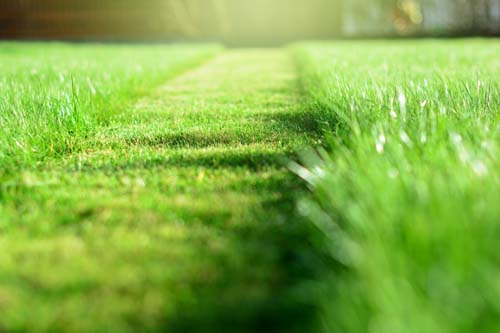
The height of your mowing should vary with the changing seasons. Start mowing in the Spring by leaving the blades between 1 to 1 ¼ inches tall. Raise your mowing height a little at a time. By June your grass should be 2 ½” tall. Maintain at this height until September, then gradually lower the mower height until your grass is 1 inch tall before Winter. Short grass will survive the rigors of Winter far better than tall grass.
Fertilizer
- Supply the grass with the nutrition needed to be healthy and beautiful.
- Maintain in the deep dark green color most people want to see.
Most lawns need more than nitrogen fertilizer to be healthy. We compare a nitrogen-only diet for a lawn to a sugar high in a child eating nothing but a “sugar diet” - eventually the child will be sickly, weak, and unhealthy. After a while it will take more sugar each time to get that high again. The same is true for lawns. When we apply a high amount of nitrogen fertilizer, the grass responds. It is on a “high”. It grows fast and greens up quickly, but soon the rush is over and it loses color and the growth rate slows. If the main source of nutrition is nitrogen, the lawn will become unhealthy, subject to disease, and other problems. Just as the child does not need large quantities of sugar in its diet, your lawn does not need large amounts of nitrogen. As with a child, your lawn needs a “balanced diet.” To feed your lawn correctly give it the right amounts of food. The following will help you do that:
The large numbers on a fertilizer package tell the percentage of the main nutrients. The best fertilizers will also include micro-nutrients, which your lawn needs. Nitrogen is the 1st number on the package, Phosphate is the 2nd number, Potash is the 3rd number, Sulfur is the 4th number, and micro-nutrients follow.
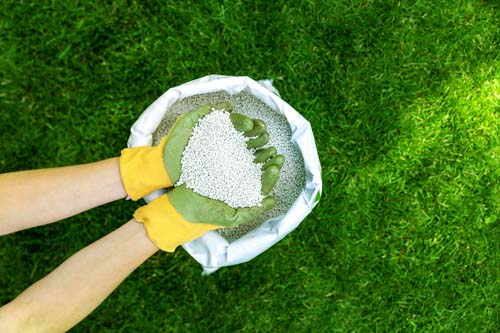
If you want to “make your neighbor jealous” with a dark green color, without all the additional growth, use a good iron product. I strongly recommend Ferrous Sulfate. Be sure to sweep any iron product from cement after spreading or it may stain.
Insect Control
Most insect problems come from grass that is not allowed to dry out.
If you do have an insect problem, take a specimen to a garden center and follow their instructions.
Weed Control
If you follow the steps outlined in this guide, you will find the grass will crowd out most weeds.
For best control into the next year, spray weeds after the first heavy frost in the fall.
